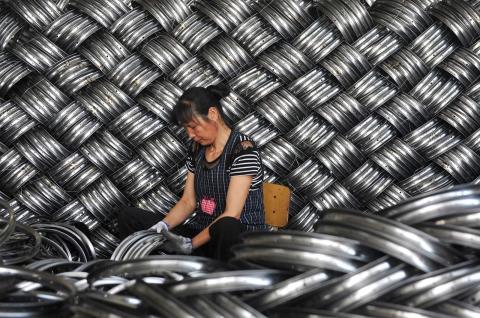With the text of the Trans-Pacific Partnership (TPP) finally revealed, commentators, specialists and interest-groups can immerse themselves in the 6000 pages (with important side-letters still to come) of the agreement. But the nature of the discussion will change now that the negotiation is finished.

The time for influencing the outcome with threatening rhetoric, position-taking and negotiation tactics is over. It's now a binary choice: join or don't join. Industry lobbyists will have to decide whether their non-negotiable positions are so immutable after all. Politicians will have to weigh up the pros and cons, and how to explain it all to voters. While Congress might yet prove to be a deal-breaker, it's time to look beyond the negotiations, assuming the deal will be ratified and that a quorum (including Australia) will sign up.
Peter Petri, Michael Plummer and Fan Zhai of the Peterson Institute in Washington have attempted an econometric assessment of the TPP’s impact. There is a powerful message from this model-based analysis: the TPP by itself has modest benefits, but if all the Asian countries worked towards TPP-style rules and eventually joined up in an over-arching, all-inclusive Asia/Pacific framework, the benefit would be very much greater. [fold]
The Peterson Institute authors estimate that world income would rise by US$295 billion per year on the TPP track, and by US$1.9 trillion if the Asian/Pacific countries ultimately combine to achieve region-wide free trade. To put this in more perspective, the world gains about 0.3 % of GDP through implementing the TPP, but an inclusive pan-Asia/Pacific agreement would raise incomes by nearly 2%.
You can argue the methodology of these model-based results, but the message is powerful. The TPP's current membership will yield a modest benefit: widen the membership and the benefits would dramatically multiply.
The problem here is that there is very little enthusiasm among key players for enlarging the TPP. South Korea might join on the basis of its recent bilateral trade deal with Canada. Indonesia might enter into negotiations, but has big domestic hurdles in terms of both opinion and existing policy. More importantly, the big non-starter — China — is neither eager to pursue membership nor welcome if it does.
The position of China, both before the agreement and now, is probably the single most important issue and is surrounded by more ambiguity than the negotiations themselves.
The TPP draft contains other provisions that will make China feel unwelcome. It requires each TPP member to 'foster an exchange rate system that reflects underlying economic fundamentals,' 'avoid persistent exchange rate misalignments' and 'refrain from competitive devaluation.' Two veterans of the Peterson Institute, Fred Bergsten and Jeffrey Schott, applaud this revival of the hoary old canard of 'currency manipulation', aimed at China. They say it 'should strengthen the US Treasury Department's ability to deter currency manipulation by our trading partners, including future members of the TPP'. Other countries are mentioned, but China is the clear target.
Currency manipulation was always over-hyped and is yesterday's issue. Even one of its strongest protagonists accepts that there is not much relevance to today's US economy. Just about everyone (including the IMF) agrees that the renminbi is not over-value now, whatever the arguments of five years ago. But these provisions are a reminder of the deep-seated antipathy to China.
This blinkered vision needs to be addressed. The Peterson Institute study mentioned above notes that: 'Given China's scale and strategic role in the region, it is difficult to envision the future of the Asia-Pacific trading system without a central role for China'.
For its part, China might make use of the study to remind the world (and US commentators) that these preferential trade agreements are distortionary, and are estimated to cost the Chinese economy 0.3% in income through trade diversion.
The way forward is to offer a less ambivalent welcome to China, encouraging it to begin a dialogue with TPP partners that would lead towards the greatly augmented benefits that would come from wider membership.
With neither the US nor Japan likely to initiate this more welcoming attitude, there might be a role for Australia, not only to encourage China to seek membership, but to address the obstructive attitudes found in the US (and probably Japan as well). Economics offers no reason to exclude China. If keeping China out of the TPP is strategically smart, let's hear this argument articulated clearly.
Photo courtesy of Flickr user TPP Media Australia.
